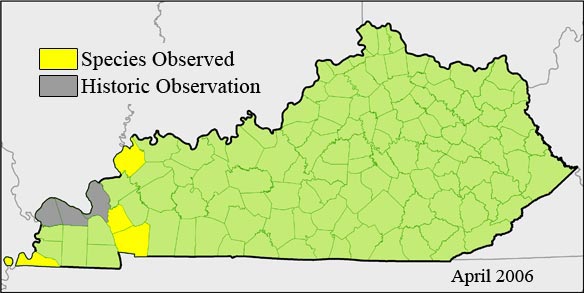P�h�o�t�o� �b�y� �K�S�N�P�C� �S�t�a�f�f�
|
Habitat:
Quiet shores or muddy waters of sloughs, cypress swamps, seasonal sloughs, or slow water.
|
Species Description:
Aquatic or subaquatic herb whose dimorphic leaves differ on the same plant depending on whether they are submerged or not. The dissected leaves fall off readily when mature and serve as vegetative propagules.
|
Phenology:
Flowering Period: Early May to late August.
|
Additional Information at NatureServe
|
Diagnostic Characteristics:
Armoracea is distinguished by white 4-petaled flowers, and its size (6 dm above water surface) . The alternate leaves will distinguish it from Ceratophyllum and Myriophyllum and the central stem of the plants distinguish the leaves from those of aquatic Ranunculus and Utricularia.
|
Management:
Avoid degradation of water quality or changes in natural stream flow. Exotic pest plants are a threat to this species.
|
Global Range:
Armoracia lacustris is found throughout central and eastern United States and southeastern Canada in a variety of aquatic habitats. This species reaches its northern range limit in Quebec and Ontario, Canada, extending southward through Michigan, Indiana, Ohio, Vermont, New York, Maryland, Virginia, Kentucky, Tennessee, and South Carolina to Florida, Georgia, Alabama, Mississippi, and Louisiana and westward to Texas, Oklahoma, Missouri, Illinois, and Wisconsin. Historically, populations also existed in Iowa and New Jersey. It is considered an introduced perennial in Oklahoma (Butler 1993).
|
Known Kentucky Occurrences:

|